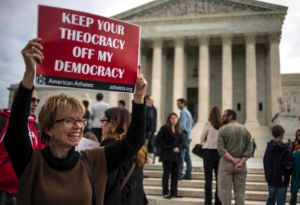There are compelling arguments for the need to keep college affordable and accessible. But at what cost?
In an informal reception on my campus, media theorist Douglas Rushkoff wondered why universities would go to the trouble of creating ideal environments for students and teachers to jointly “conspire together,” only to be so indifferent about giving these advantages up for the disembodied world of a computer screen. It was a good observation, and a reminder of how precious the idea of a physically connected academic community actually is. I sometimes wonder if sages a few decades from now will puzzle over why many academics privileged to be a part of thriving bricks-and-mortar campuses were so willing to allow the interpersonal richness of their classrooms to be eclipsed by instruction reduced to the frozen gaze of a monitor.
I regularly remind my students of the durable verity honored by leaders who run many of the world’s great businesses and institutions. As a former head of Sony Pictures noted, success usually comes to those passionate enough to want to be “in the same room” and “breathing the same air” with clients and associates. No CEO expects to successfully lead a powerful organization using Skype. The fact that there are so many people who know they must foster personal relationships surely accounts for why our airports and airliners are packed.
There are indeed compelling arguments about the need to keep college affordable and accessible. But at what cost? We are already seeing students who have grown too comfortable alone in front of a small screen. For many, screen time now rivals sleep time. “Screen addiction” in South Korea that it is now recognized as a full blown mental health problem.
To be sure, online courses are cheaper to run, and may contain some compelling but necessarily “canned” presentations. Often an online “hybrid” course is only nominally “interactive.” Feedback to the student is usually limited, unilateral with the online teacher rather than multi-lateral as happens when people actually meet in the same space.
I know that the training I’ve taken online has been completely forgettable: little different than the maw of electronic content that washes over all of us daily.
The cost problem is also aggravated as well by unnecessary status-striving. Too many families make decisions about higher education as if they were choosing an expensive car. The choice may be more aspirational than practical. Money spent for tuition to an “elite” private college certainly yields an ersatz kind of social prestige. But the renown of many private institutions regretfully lies more in their corporatized athletic programs than their devotion to undergrads.
A lot is at stake for new a first-year student. Will their first classes more closely resemble an airport waiting room prior to an overbooked flight? Will the person in charge be able to learn their names? Answer their questions? Are the best faculty teaching freshman? Are individual class sections intimate enough that it is actually awkward for a student to not participate? There is real genus in the liberal arts college model of “small” classes and dedicated professional teachers. It continues to make possible what communication theorist John Peters sees as the baseline for the richest chances at connection with others: meeting in the same space where we are close enough to touch each other.
Comment at: woodward@tcnj.edu

